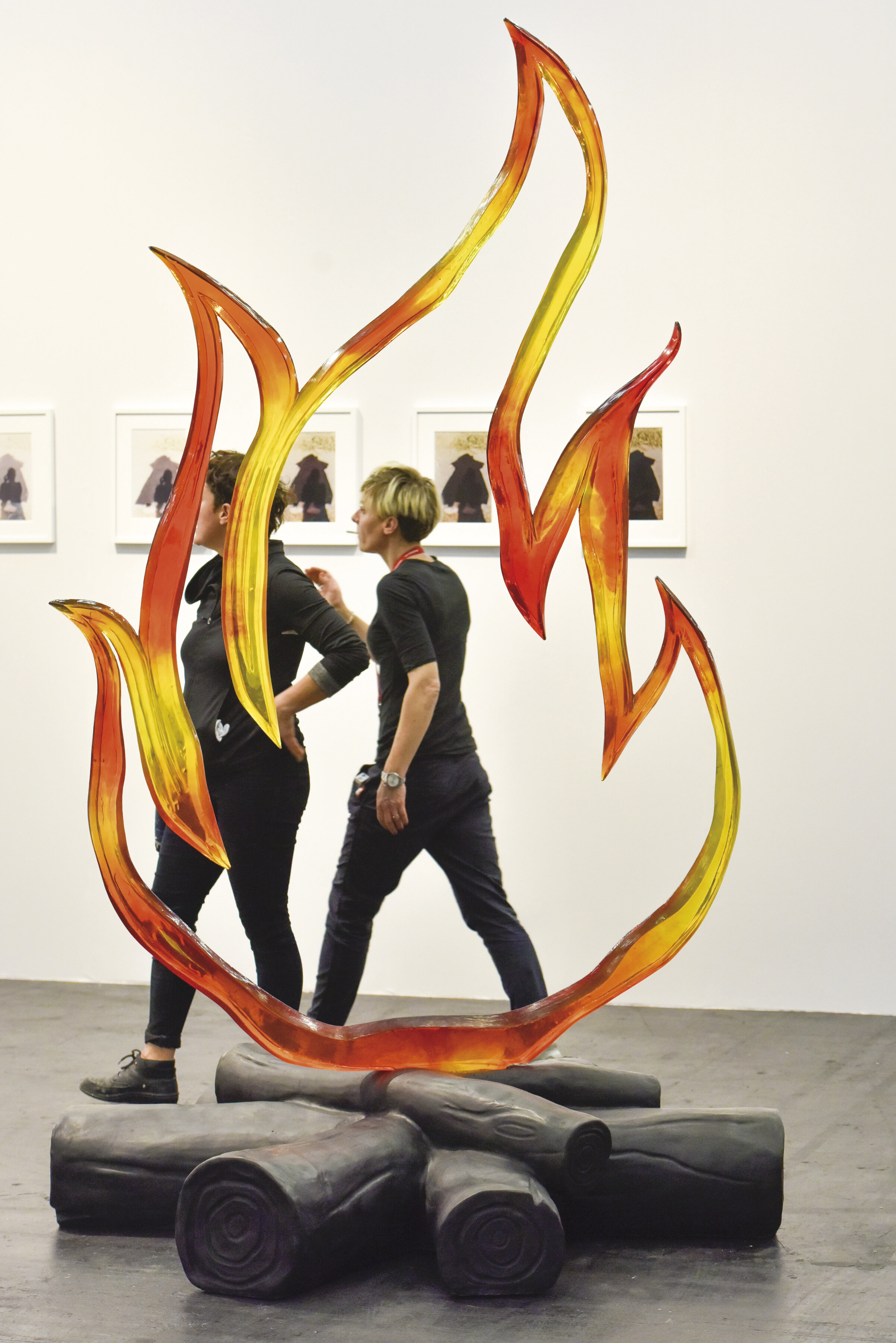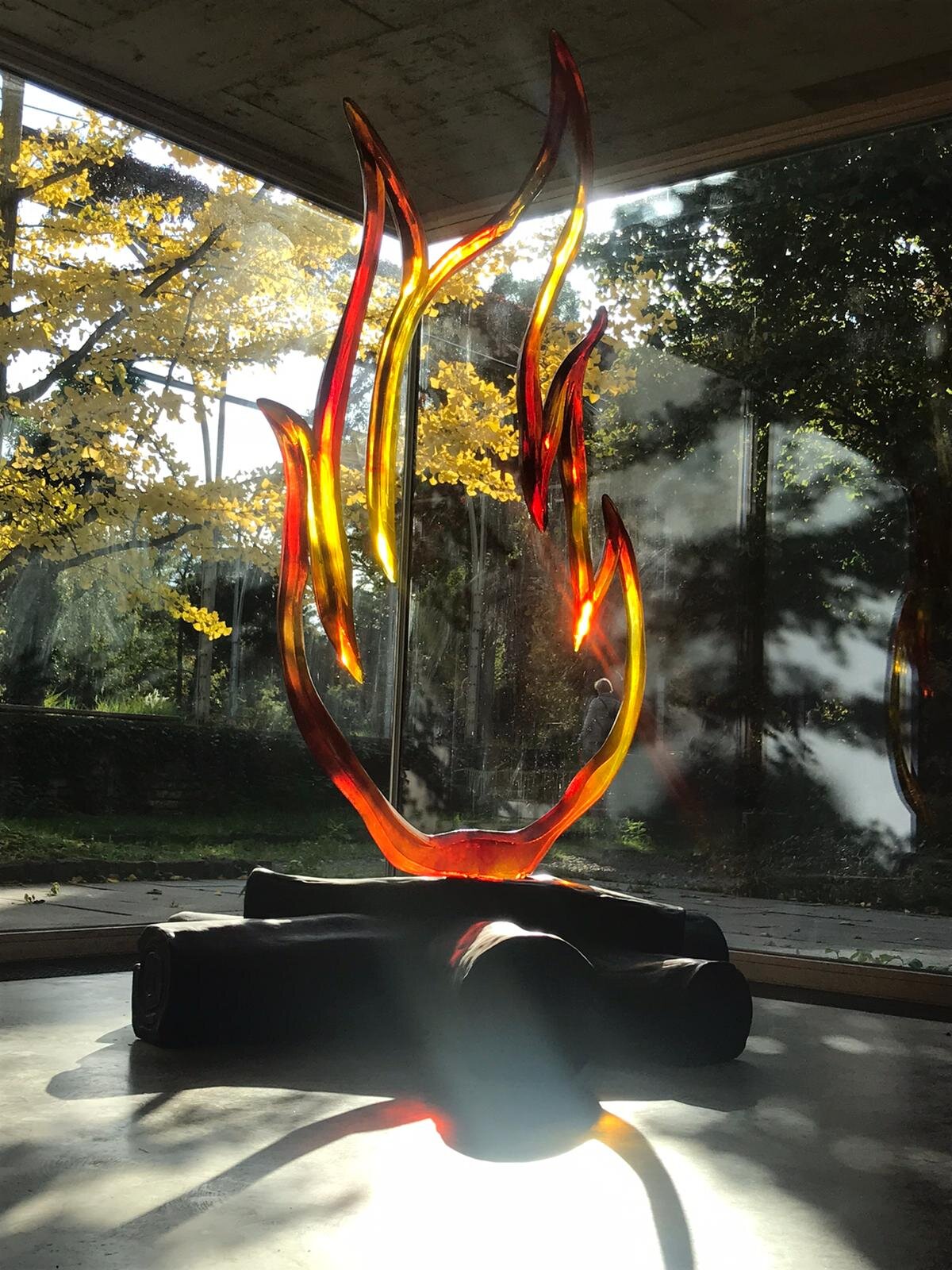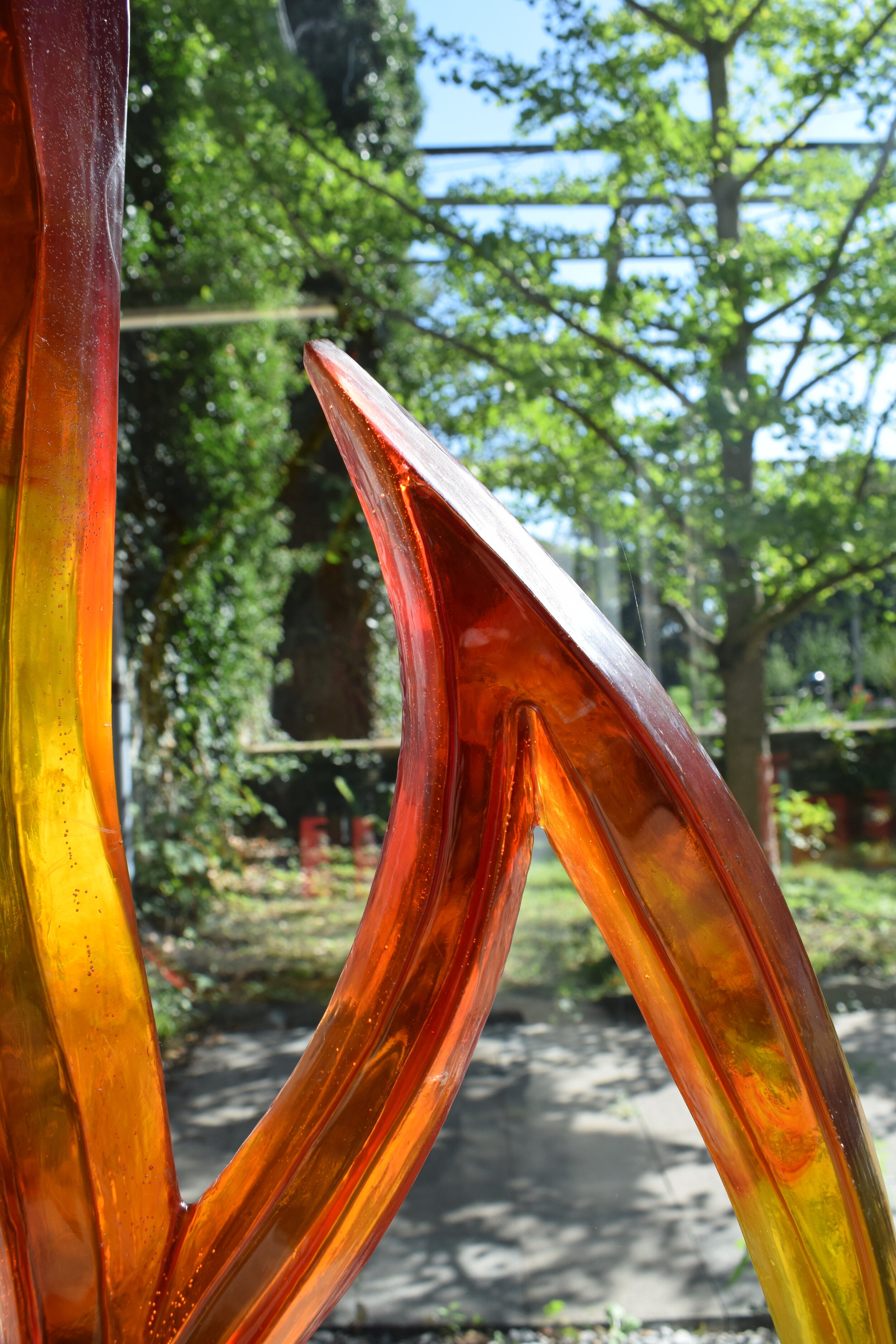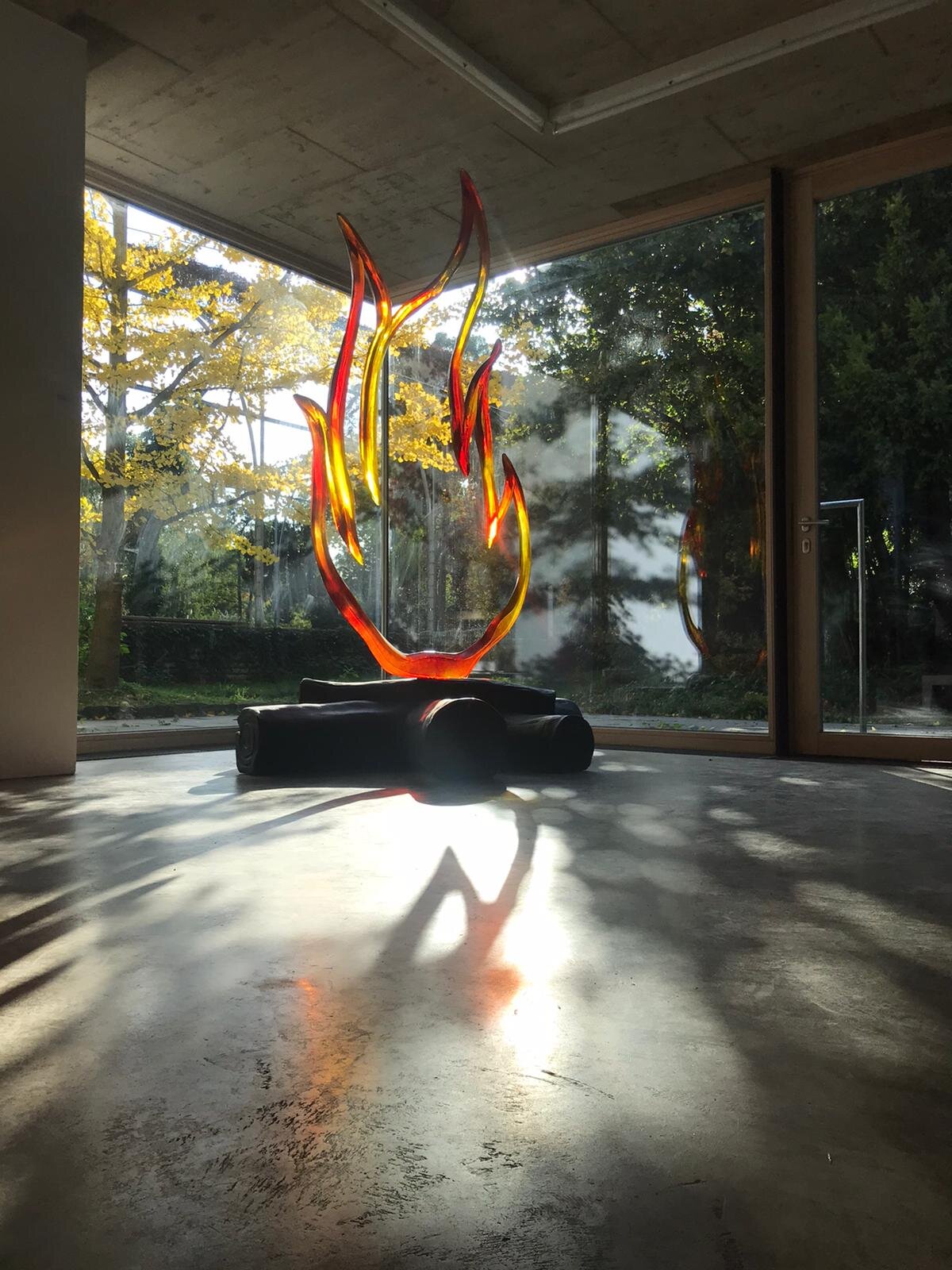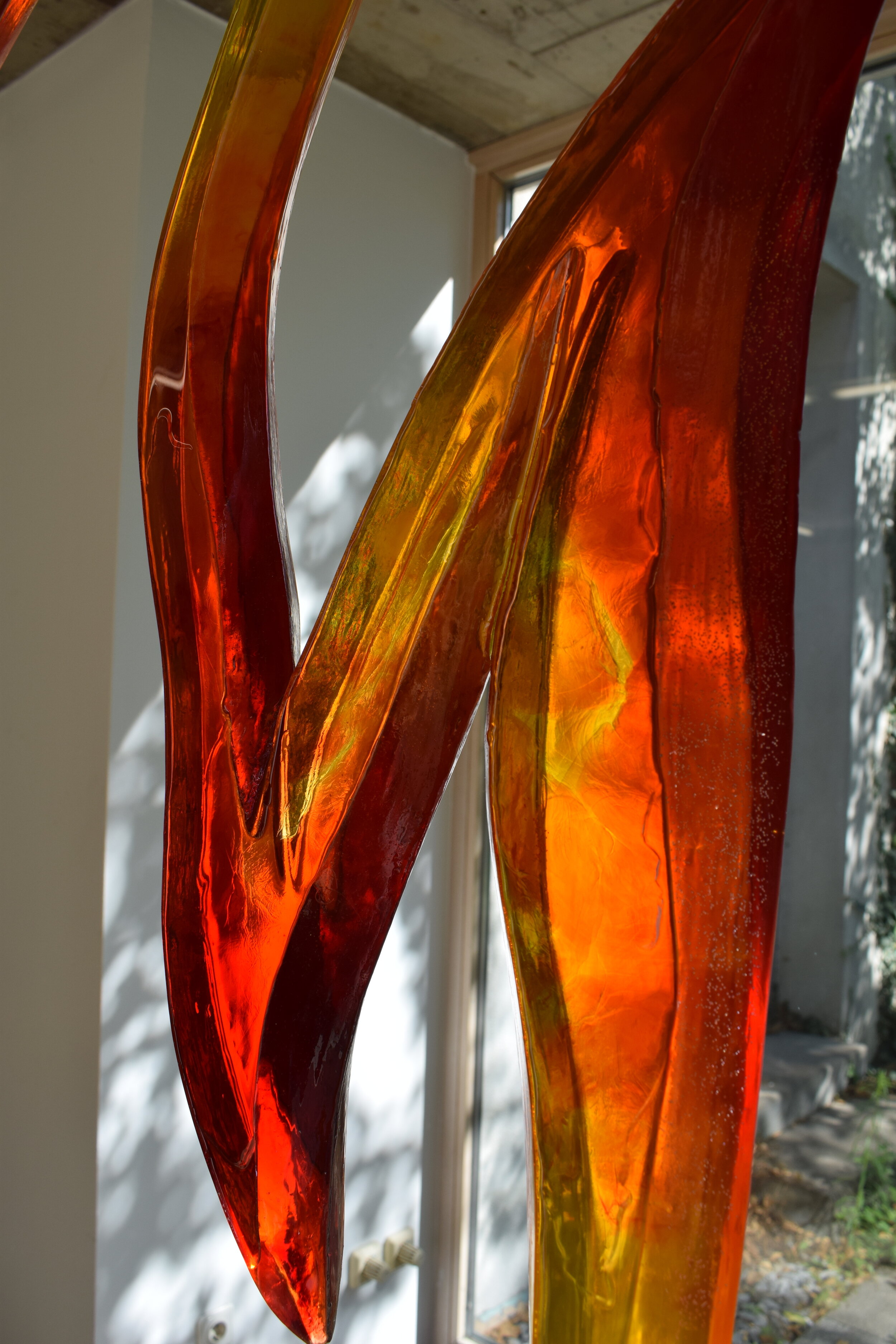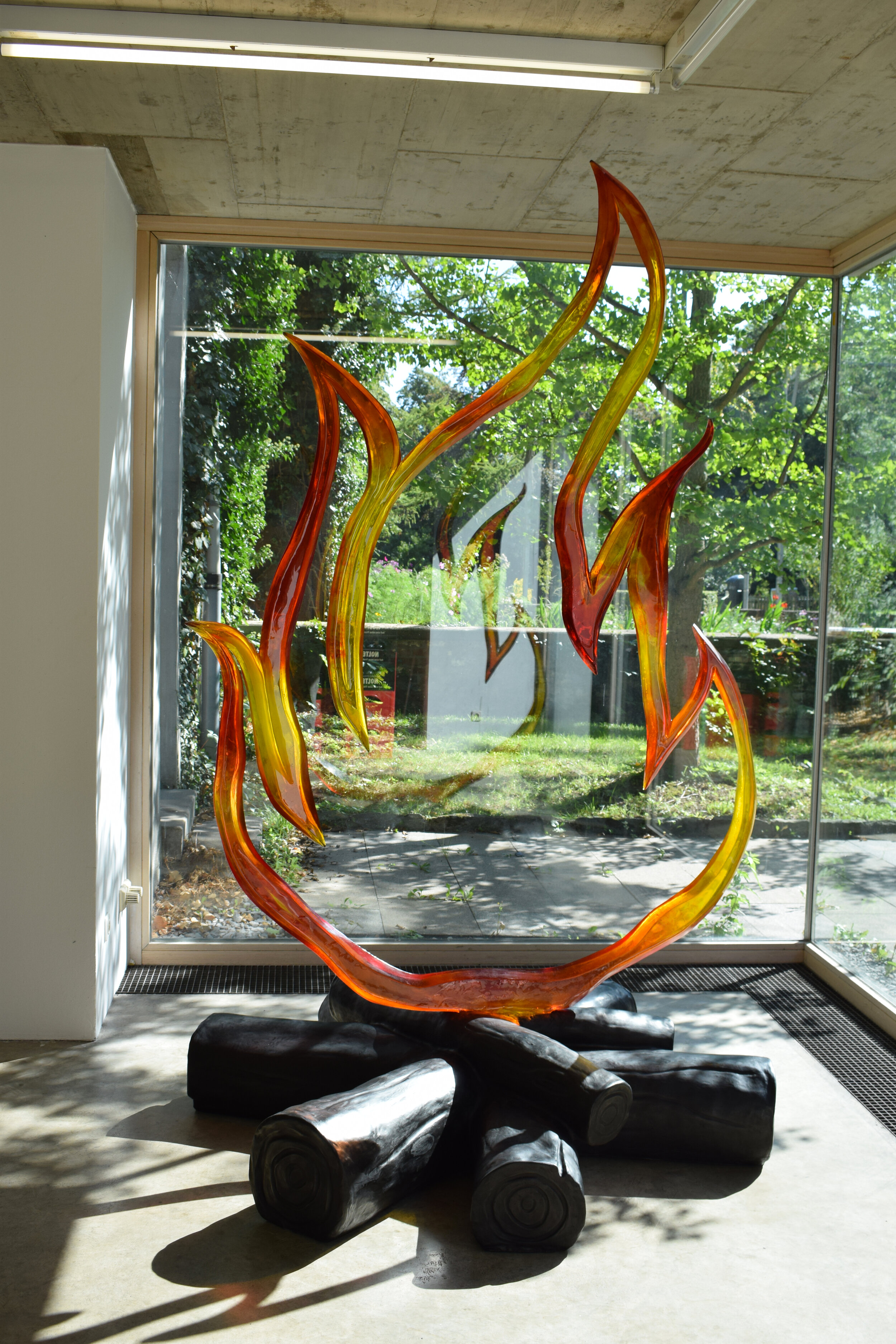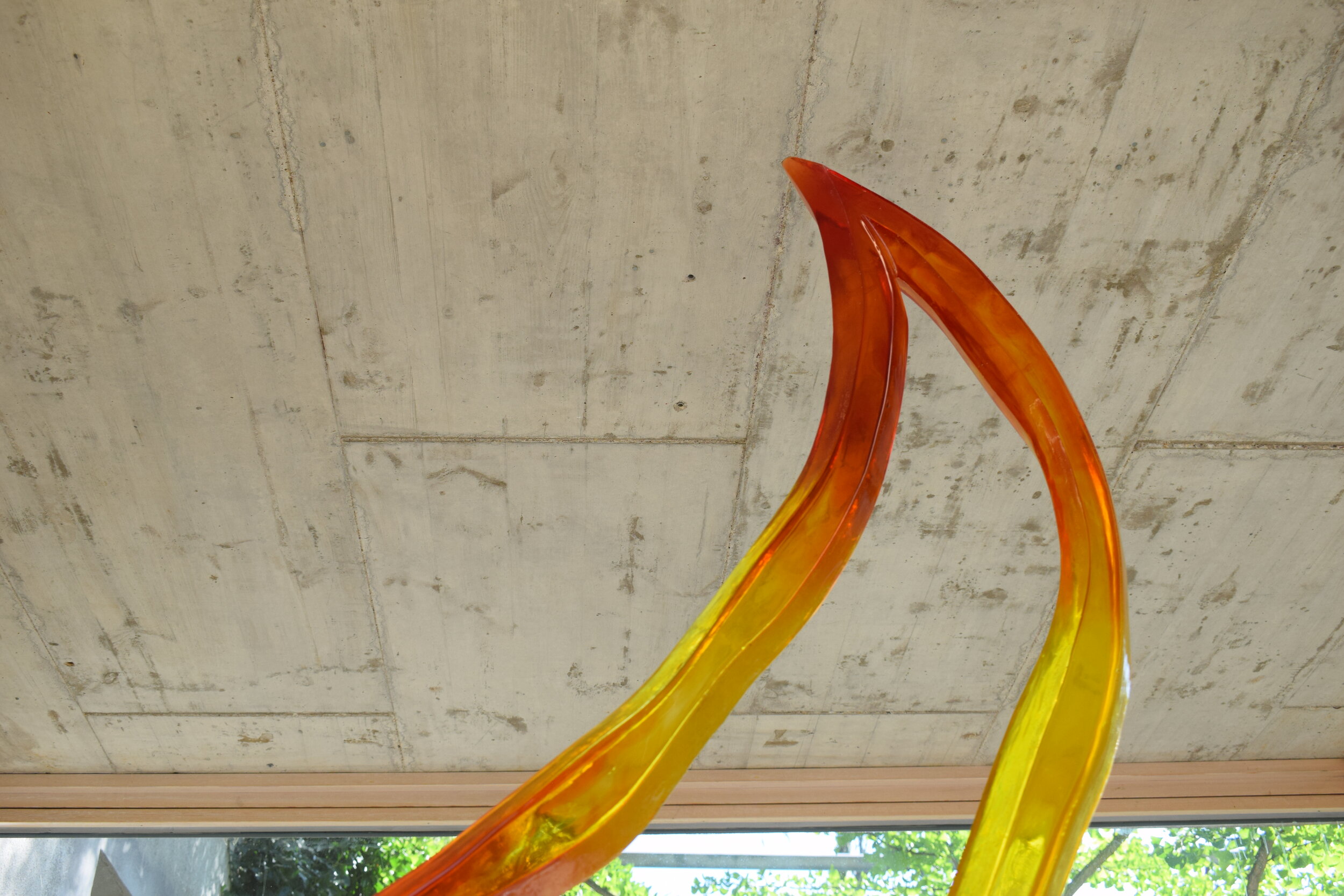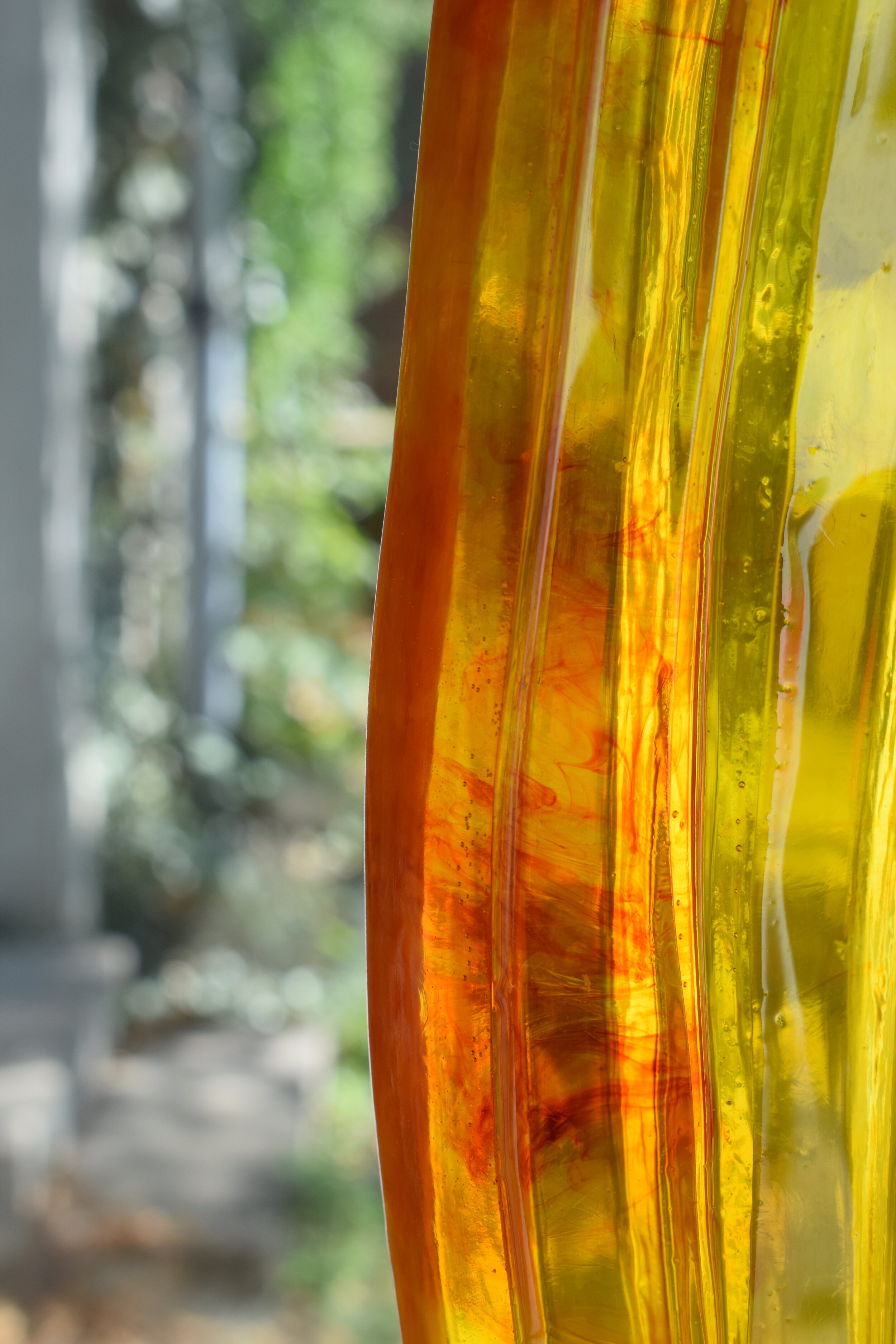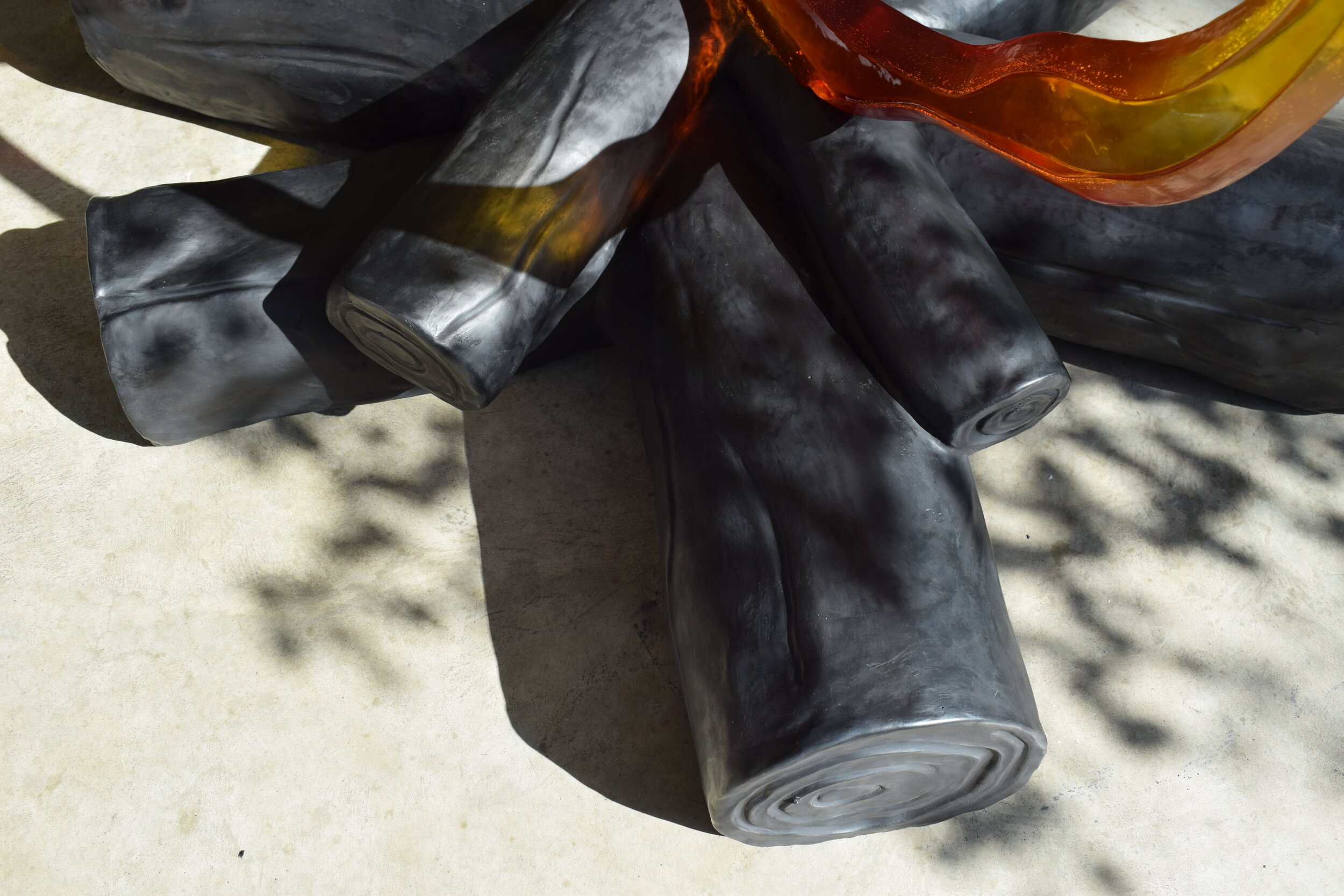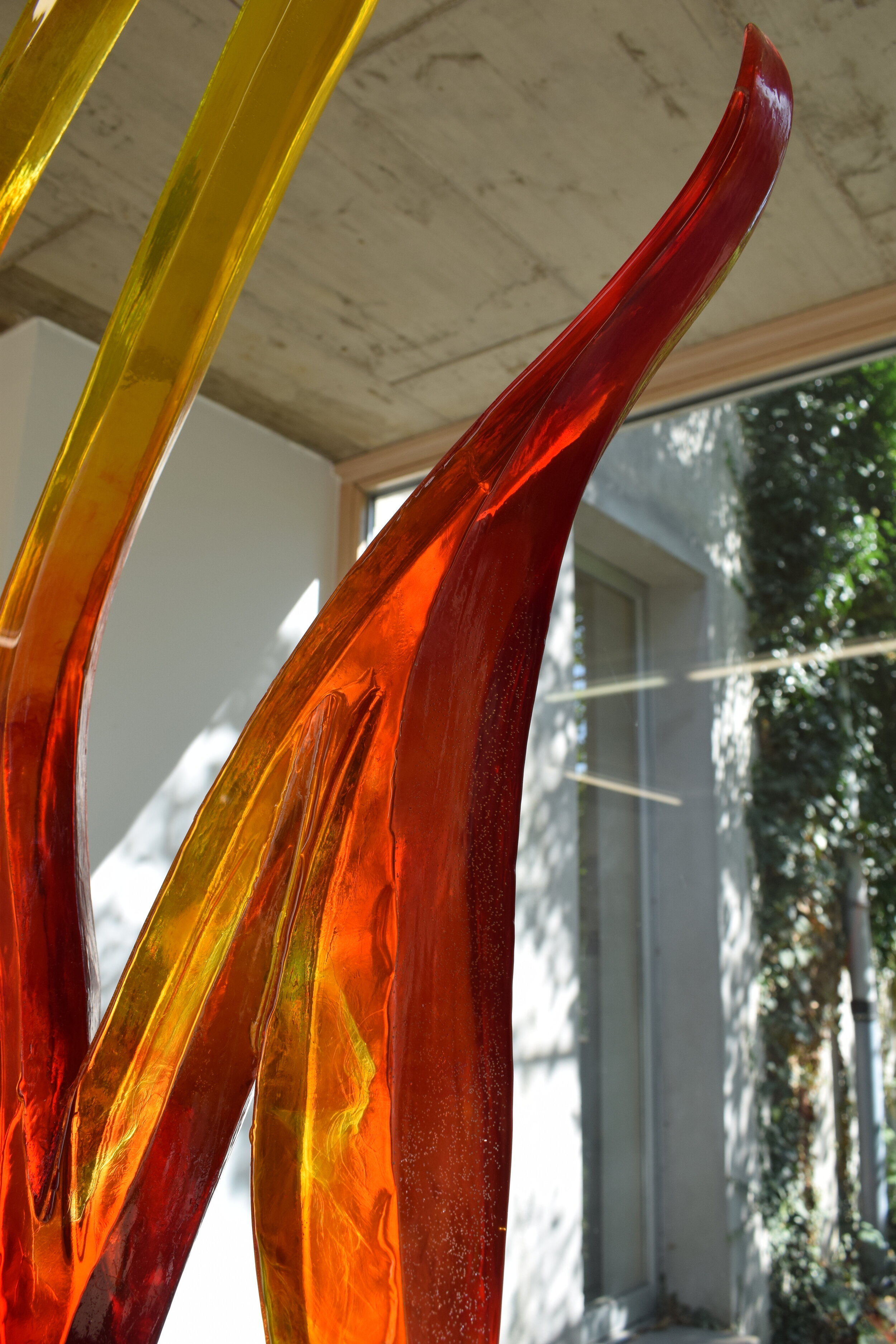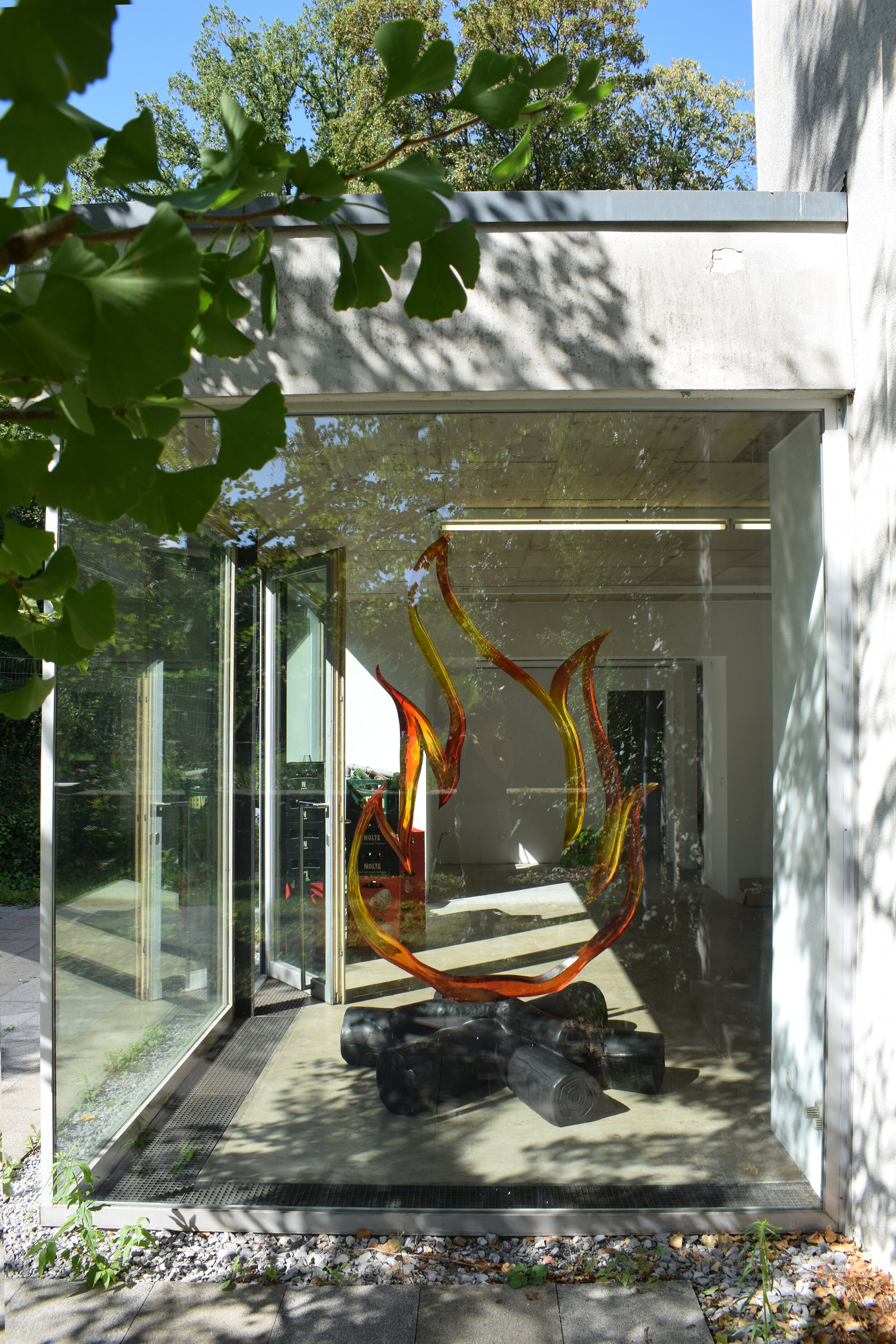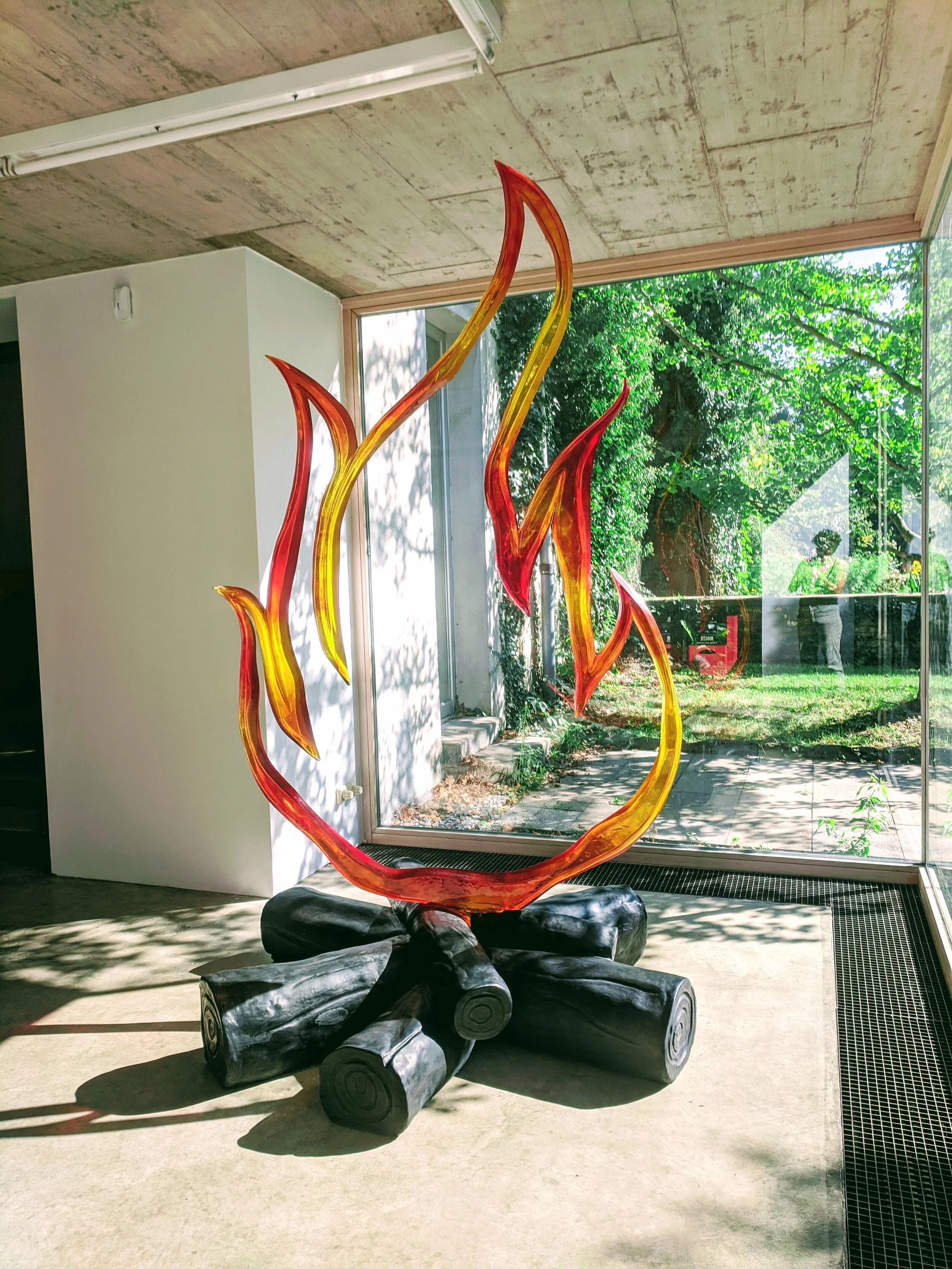All the extinct fires, 2019
Cast resin, acrylic resin, building foam, flame: approx. 220 x 120 x 10 cm, wood: approx. 35 x 150 x 150 cm
Fire changed us, even to our genome. We hold fire as a species monopoly. We will not share it willingly with any other species. Other creatures knock over trees, dig holes in the ground, hunt – we do fire. It’s our ecological signature. Our capture of fire is our first experiment with domestication. This process began with hunting and foraging practices, but sharpens with agriculture. The humanity’s new firepower has a great reach, and the knock-on effects are rippling through the planet’s biosphere independently of global warming. The new energy is rewiring the ecological circuitry of the earth. It has scrambled ecosystems and is replacing biodiversity with a pyrodiversity – a bestiary of machines run directly or indirectly from industrial combustion. The velocity and volume of change is so great that observers have begun to speak of a new geologic epoch, a successor to the Pleistocene, that they call the Anthropocene. It might equally be called the Pyrocene. The Earth is shedding its cycle of ice ages for sculpting a fire age.
In 1954, the US anthropologist Loren Eiseley likened humanity itself to a flame – spreading widely and transmuting whatever we touch. Here, the frozen flame frames us and rises between us. An element of myths, metaphors and our co-evolving history. We can keep on bathing in this fire, keep on imagining it warms us, keep on waiting for the fire smoke, keep on...
Photos: Thomas Klerx/ Credits: Kölnmesse GmbH, Maurice Funken, Thomas Weidenhaupt, Selma Gültoprak
Installation view: Art Cologne 2019 with Martinetz Gallery (Booth at Neumarkt), NAK - Neuer Aachener Kunstverein
